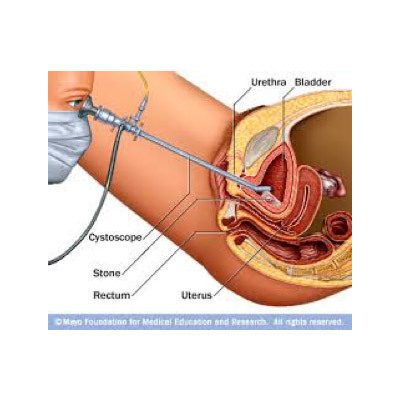
LASER CLT
Small bladder stones may pass on their own, while larger bladder stones can require medicine or surgery. Bladder stones can cause infections and other problems if they are not treated.
LASER CLT (Cysto-lithotripsy), the surgery is minimally invasive, with no incisions made on your body. After you have fallen asleep, a small lighted instrument (ureteroscope) is inserted into your urethra and bladder to gain access to your ureter and kidney.
Symptoms of Bladder stones may include:
- Pressure and/or pain in the abdomen
- Blood in the urine, unusually coloured or dark pee,
- Difficulty urinating,
- Frequent urges to urinate,
- Inability to urinate except in specific positions,
- Interruption of the urine stream,
- Soreness or discomfort in the penis, and
- Signs of uti (such as fever, pain when urinating, and need to urinate often)
Before performing LASER CLT, some common diagnostic tests include:
- Imaging tests (KUB X-Ray, abdominal ultrasound, MRI)
- Blood urea nitrogen (BUN) test
- IVP (Intravenous Pyelogram)
- Blood test
- Urinalysis
Tests and Treatment
Once the stone is identified, a laser fibre transmits Holmium energy to break it up. The surgeon removes some pieces through the urethra with a small basket, and smaller pieces can be passed later with urination. A high-powered holmium laser with high-frequency emissions that "dust" the stones into a fine powder may also be used by the surgeon. Following surgery, you can pass the fine particles in your urine. Modulating the pulse using the Moses effect is an even more efficient way of transmitting the holmium laser, which may result in more efficient stone dusting or fragmentation.
The surgeon will most likely place a stent between the kidney and the urethra. This promotes healing and facilitates the passage of small stone fragments. Most importantly, this stent allows your kidney to drain while it heals. The stent is removed approximately one week after surgery. Depending on the size and number of kidney stones, surgery usually takes less than an hour. The use of the dusting technique in conjunction with the Moses effect may reduce the need to remove stones with a basket, thereby reducing the need for a stent.
Make an appointment right away for consultation on your urological issue.
Call With Doctor